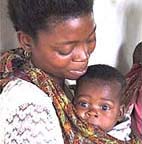|
||||

| |
|||
Yellow fever is an acute infectious disease caused by a virus that is transmitted by various species of Aedes mosquito and, in South America, Haemogogus species. The WHO estimates that there are some 200 000 cases of the disease each year, and 30 000 deaths. In Sub-Saharan Africa, 468 million people in 33 countries are considered to be at risk of the disease. In recent years, the number of epidemics of yellow fever has increased. There are few specific treatments for yellow fever, and vaccination is the single most important measure for preventing the disease. A single dose of the existing vaccine is highly effective and provides protection for at least a decade, and probably for life. More than 300 million doses have been given. The World Health Organization strongly recommends routine childhood vaccination against yellow fever. The vaccine can be given safely to babies of 9 months, at the same time as measles vaccine. Seventeen African nations have so far agreed to incroporate yellow-fever vaccination into their routine national immunization programmes. However, to prevent epidemics, at least 80 per cent of the population of a country must be immunized, and very few countries have achieved this level of coverage to date. For more information see:
More vaccines that are available now |
|||
|
Contact GAVI | Guestbook | Text version | Credits and Copyright |
|||
